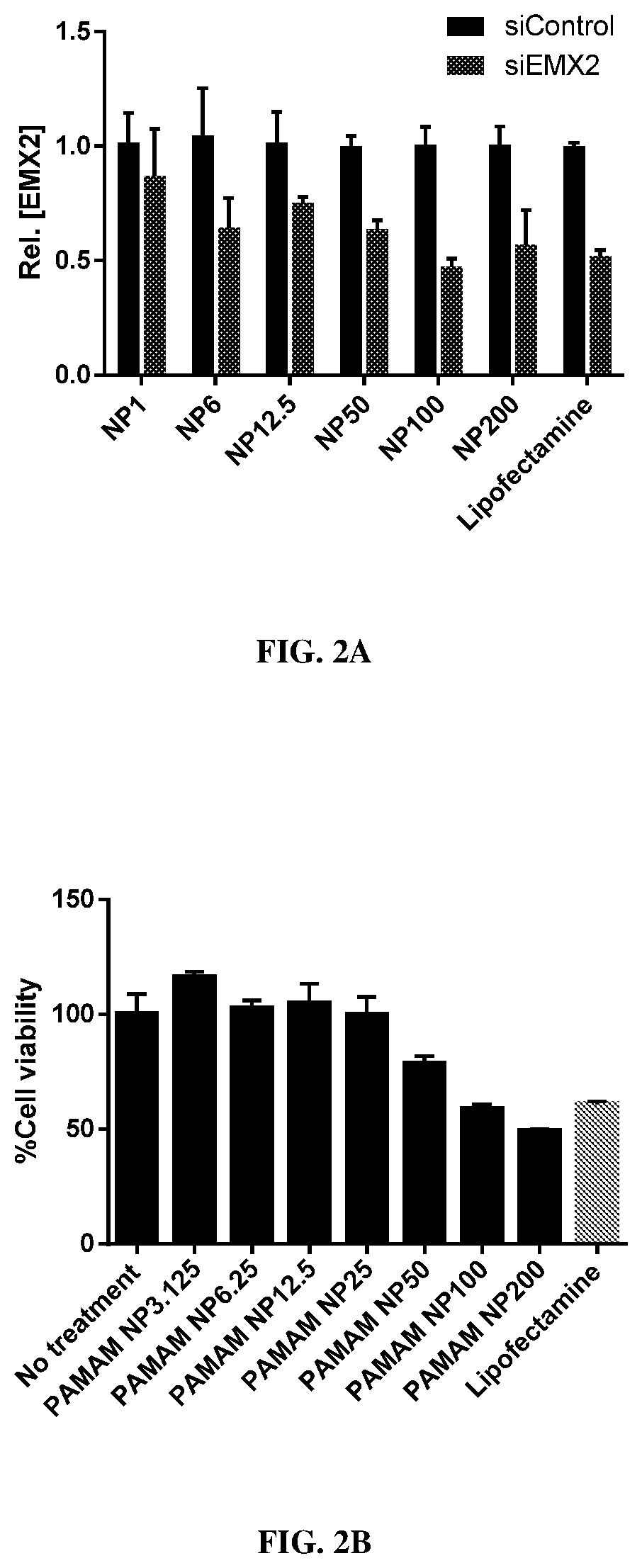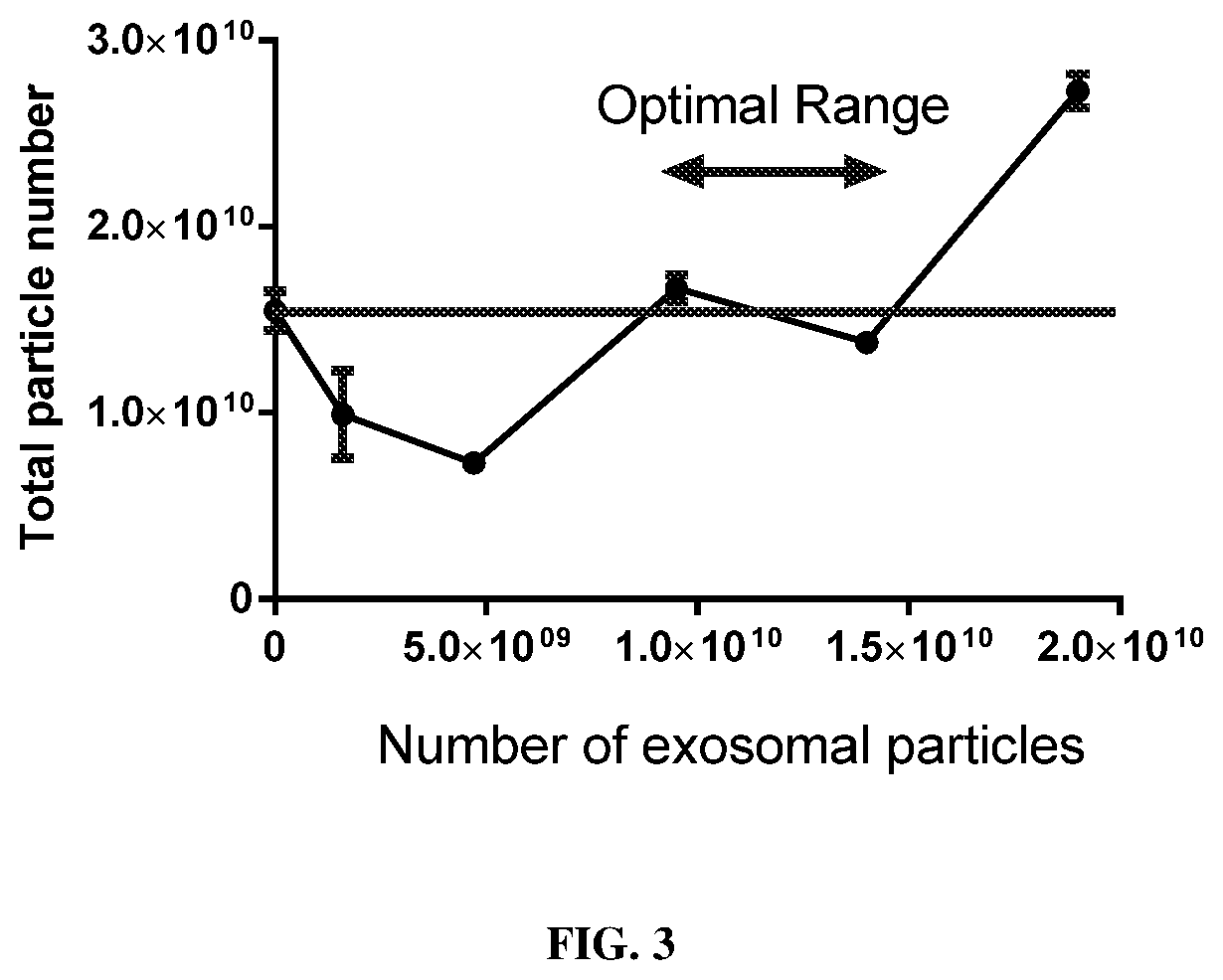Hybrid exosomal-polymeric (HEXPO) nano-platform for delivery of rnai therapeutics
a nano-platform and exosomal polymer technology, applied in the field of medicine, can solve the problems of inability to scale up, labor-intensive and cost-efficient preparation methods, limited therapeutic applications of rnai nucleotides, etc., and achieve the effect of high efficiency
- Summary
- Abstract
- Description
- Claims
- Application Information
AI Technical Summary
Benefits of technology
Problems solved by technology
Method used
Image
Examples
example 1
n of HEXPO Nanoparticles Using Naturally Occurring Exosomes
[0134]To generate large quantities of exosomes for therapeutic purposes, cells were isolated from SV40 immortal mice. This is an ideal model for obtaining exosomes from normal cell lines since the SV40 virus can be fully inactivated after incubation of these cells at 37° C. for 2 days. Many cell lines (e.g., fibroblasts, macrophages, dendritic cells) have already been isolated from these mice, and the amount of exosomes produced by each cell type (FIG. 1A) along with their cell penetration potential was systematically assessed (FIG. 1B). Cancer cells and normal fibroblasts produced large amounts of exosomes that were readily taken up by recipient cells.
[0135]To facilitate efficient loading of RNAi nucleotides into exosomes, a slightly positively charged siRNA-containing polymeric core was formulated using either PAMAM dendrimers, chitosan, or protamine. All of these polymers complex with RNAi nucleotides with high efficiency...
example 2
n of HEXPO Nanoparticles Using Plant-Derived Exosomes
[0138]Despite the promise of using exosomes derived from immortal mice, culturing large number of cells in vitro is quite labor-intensive, and the potential immunogenicity of these murine exosomes in humans is currently unknown. Therefore, other potential sources of exosomes that are inexpensively obtained and safe for use in humans were investigated. Among many possible sources, edible vegetables and plants are promising alternatives for exosomes production. On a per-dollar basis, the amount of exosomes that can be obtained from fruit is approximately 40,000-fold higher compared with cells cultured in exosomes-free media (FIG. 12A). By purifying fruit-derived exosomes using a sucrose gradient column, the potential concern of isolating non-exosomes impurities, which would typically arise from the gradient ultracentrifugation method, was overcome. The final purified exosomes were ˜100 nm, and HEXPO nanoparticles with high siRNA loa...
PUM
| Property | Measurement | Unit |
|---|---|---|
| Mass | aaaaa | aaaaa |
| Diameter | aaaaa | aaaaa |
| Composition | aaaaa | aaaaa |
Abstract
Description
Claims
Application Information
 Login to View More
Login to View More - R&D
- Intellectual Property
- Life Sciences
- Materials
- Tech Scout
- Unparalleled Data Quality
- Higher Quality Content
- 60% Fewer Hallucinations
Browse by: Latest US Patents, China's latest patents, Technical Efficacy Thesaurus, Application Domain, Technology Topic, Popular Technical Reports.
© 2025 PatSnap. All rights reserved.Legal|Privacy policy|Modern Slavery Act Transparency Statement|Sitemap|About US| Contact US: help@patsnap.com



